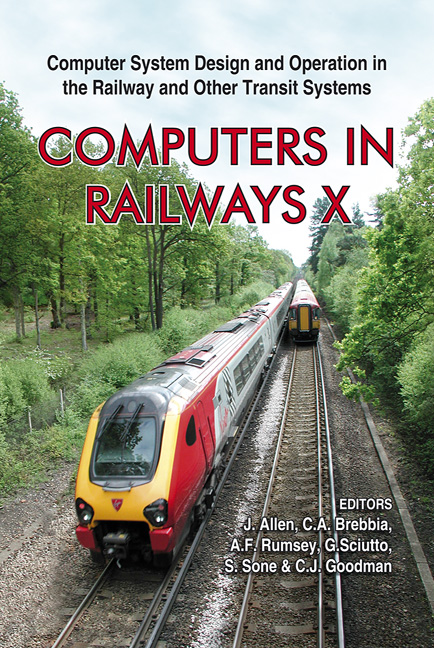Design And Simulation Of Railway Vehicles Braking Operation Using A Scaled Roller-rig
Price
Free (open access)
Transaction
Volume
88
Pages
15
Published
2006
Size
1,096 kb
Paper DOI
10.2495/CR060851
Copyright
WIT Press
Author(s)
N. Bosso, A. Gugliotta & A. Somà
Abstract
A 1:5 scale roller-rig has been recently realized at Politecnico di Torino for the simulation of railway dynamics. In this work it is shown that it is possible to reproduce the braking dynamics of a railway vehicle on the roller rig. For this purpose a disk-brake braking system has been designed that can be installed on the existing bogie. The inertia of the vehicle can easily be simulated adding inertia to the rollers, so that the braking distance can be evaluated on the basis of the angular displacement of the rollers. Design and optimisation of the system has been carried out with the aid of a numerical multibody model, in which different friction laws have been implemented. The simulations have been performed varying the running conditions (friction coefficient, axle load, velocity). Keywords: wheel, rail, friction, roller-rig. 1 Introduction A roller-rig is a test bench for railway vehicles, where the track is replaced by a pair of rollers for each wheelset of the vehicle. At Politecnico di a reduced scale roller rig (1:4 -1:5) Torino has been realized to perform dynamic simulations on a single wheelset or on an entire bogie. The realization of reduced scale models, lead to evident benefits in terms of costs of realization of the test rig and of the prototypes used to perform the tests. On the other hand it is necessary to use adequate similitude model to obtain, from the scaled results, an estimation of the behaviour of the real vehicle. Several models proposed in literature have been analysed and compared [1], and the vehicle has been designed according the similitude law proposed by Jaschinski [2].
Keywords
wheel, rail, friction, roller-rig.





